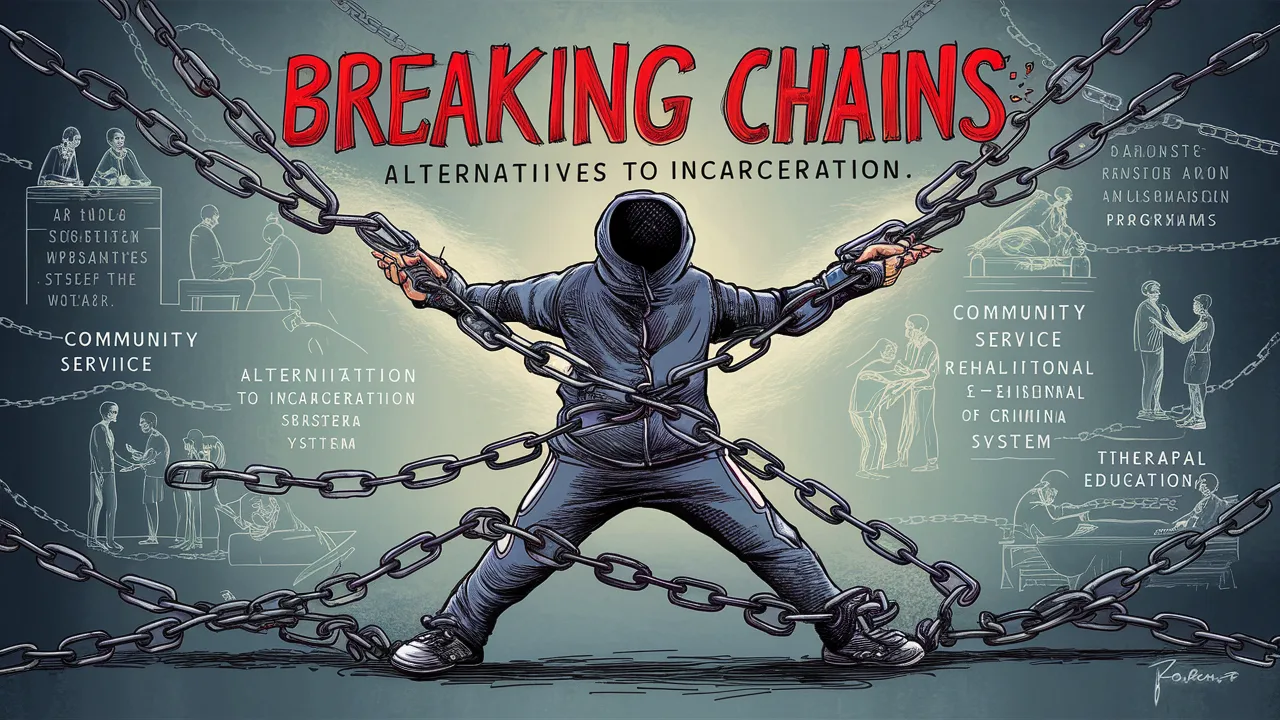Nonsocialist Alternatives to Capitalism: A Glimpse Beyond Both Extremes
For over a century, the debate between capitalism and socialism has dominated economic discourse. Yet, neither system has proven to be a perfect solution. Capitalism, while fostering innovation and wealth creation, can exacerbate inequality and environmental degradation. Socialism, on the other hand, often struggles with economic stagnation and individual freedom.
As an alternative, a diverse range of nonsocialist models have emerged, each offering unique approaches to economic organization and resource allocation. In my 25 years as a researcher and analyst of economic systems, I’ve delved deep into these alternatives, and here’s what I’ve found:
I. Market-Based Alternatives:
A. Mutualism:
Imagine a world where workers own and democratically control the businesses they work for. That’s the core principle of mutualism, an economic system based on worker cooperatives and fair exchange. Proponents highlight its potential for:
- Empowering workers: By owning their workplaces, workers have a greater say in decision-making, leading to fairer wages and improved working conditions.
- Boosting economic dynamism: Worker-owned cooperatives can be highly innovative and adaptable, responding quickly to market changes.
- Promoting social justice: Mutualism inherently reduces income inequality and fosters a more equitable distribution of wealth.
However, challenges also exist:
- Scalability: Transitioning entire economies to worker cooperatives can be a slow and complex process.
- Market inefficiencies: Some argue that worker-owned enterprises may not always be as efficient as traditional, profit-driven firms.
- Addressing broader issues: Mutualism primarily focuses on workplace democracy, and its ability to address broader social and environmental challenges needs further exploration.

B. Georgism:
This theory, championed by Henry George, proposes that land value, not labor or capital, should be the primary source of public revenue. This is achieved through a tax on the unimproved value of land, incentivizing efficient land use and reducing poverty. Georgism boasts several potential benefits:
- Promoting economic equality: By taxing land rents, the unearned income accruing to landowners, Georgism aims to reduce income inequality and create a fairer society.
- Encouraging efficient land use: The land value tax discourages speculation and encourages landowners to use their land productively.
- Reducing poverty: The revenue generated from the land value tax can be used to fund social programs and alleviate poverty.
However, implementation hurdles remain:
- Political resistance: Landowners often wield significant political power, making it challenging to implement a land value tax.
- Potential economic disruption: A sudden shift in the tax burden could have short-term economic consequences.
- Addressing all issues: While Georgism tackles land ownership and inequality, it doesn’t necessarily address other concerns like worker rights or environmental sustainability.
C. Social Market Economy:
Think of it as a bridge between pure capitalism and socialism. The social market economy combines free markets with government intervention to promote economic stability and social welfare. This model boasts strengths like:
- Economic efficiency: Markets allocate resources efficiently, fostering innovation and economic growth.
- Social safety nets: Government programs provide support for the unemployed, sick, and elderly, ensuring a basic level of social security.
- Regulation: Government intervention protects consumers, workers, and the environment from market failures.

However, striking the right balance can be tricky:
- Balancing market forces with intervention: Finding the optimal level of government intervention without stifling market dynamism can be challenging.
- Political priorities: Different political parties may have conflicting views on the appropriate role of government, leading to policy instability.
- Perpetuating inequalities: While safety nets provide support, the social market economy may not fully address deep-rooted inequalities in wealth and income.
These are just a few examples of the diverse landscape of nonsocialist alternatives. In the next section, we’ll explore decentralized and community-based systems, offering another lens through which to envision economic organization beyond the traditional capitalist and socialist paradigms.
II. Decentralized and Community-Based Systems:
Moving beyond centralized, top-down economic models, several nonsocialist alternatives emphasize local control, community resilience, and alternative forms of exchange. Let’s delve into three such systems:
A. Solidarity Economy:
Imagine a network of cooperatives, community gardens, and ethical businesses working together to meet local needs and build a more just and sustainable economy. That’s the essence of the solidarity economy, which prioritizes:
- Building alternative structures: Solidarity economy actors create alternative institutions like worker cooperatives, community land trusts, and ethical businesses that operate on principles of cooperation and social justice.
- Empowering communities: Local communities have greater control over their economic resources and decision-making, fostering self-reliance and resilience.
- Strengthening social connections: The solidarity economy emphasizes collaboration, mutual aid, and social solidarity, promoting a more inclusive and equitable society.
However, challenges exist in scaling and integrating with broader systems:
- Limited scalability: The solidarity economy often operates at a local level, making it challenging to achieve widespread adoption and compete with larger corporations.
- Integration with mainstream markets: Navigating complex legal and regulatory frameworks that favor traditional capitalist structures can be difficult.
- Dependence on social cohesion: The success of the solidarity economy relies heavily on strong social bonds and trust within communities.
B. Gift Economy:
Forget money and transactions; the gift economy revolves around the exchange of goods and services based on reciprocity, trust, and social connections. This system offers unique advantages:
- Fostering social connections: The act of giving and receiving strengthens relationships and builds a sense of community belonging.
- Reducing emphasis on materialism: By de-emphasizing monetary exchange, the gift economy can help curb excessive materialism and promote more sustainable consumption patterns.
- Promoting sustainability: Sharing and repairing resources within a gift economy can reduce waste and environmental impact.

However, practical limitations exist:
- Meeting all needs: The gift economy may not be suitable for meeting all individual needs, particularly complex ones requiring specialized skills or resources.
- Limited applicability: Integrating the gift economy into complex modern economies with diverse needs and scales can be challenging.
- Challenges in ensuring fairness and transparency: Establishing clear norms and mechanisms for reciprocity and preventing exploitation within a gift economy can be complex.
C. Local Currencies and Barter Systems:
In communities around the world, local currencies and barter systems have emerged as alternatives to national currencies. These systems offer benefits like:
- Encouraging local economic activity: Local currencies keep wealth circulating within the community, supporting local businesses and producers.
- Reducing reliance on centralized financial systems: Communities gain greater control over their economic resources and are less vulnerable to external financial shocks.
- Strengthening community relationships: Local currencies foster collaboration and exchange within communities, promoting social cohesion and trust.
However, limitations also exist:
- Limited reach and scalability: Local currencies typically have limited circulation and may not be accepted outside their designated communities.
- Cumbersome for larger transactions: Bartering or using local currencies can be cumbersome for complex transactions involving diverse goods and services.
- Challenges in ensuring value stability: Maintaining the value and stability of local currencies can be challenging, particularly in larger and more complex systems.
These decentralized and community-based systems offer unique perspectives on economic organization, highlighting the potential for alternative models that prioritize social justice, sustainability, and local control. In the next section, we’ll explore hybrid and emerging models that further push the boundaries of economic thinking, offering even more possibilities for a future beyond the traditional capitalist and socialist paradigms.
III. Hybrid and Emerging Models:
The world of alternative economics is constantly evolving, with new models emerging that blend elements of existing systems or forge entirely new pathways. Let’s explore three such cutting-edge models:
A. Platform Cooperativism:
Imagine Uber or Airbnb, but owned and controlled by the drivers and hosts themselves. That’s the vision of platform cooperativism, which creates worker-owned and controlled online platforms, challenging the dominance of traditional tech giants. This model offers exciting possibilities:
- Fair distribution of profits: Workers who create value on the platform capture a greater share of the profits, promoting economic justice and worker empowerment.
- Democratizing access to digital tools: By giving workers control over the platform, platform cooperativism empowers them to shape its direction and ensure fair treatment.
- Promoting innovation and competition: Worker-owned platforms can be just as innovative as their traditional counterparts but with a focus on ethical practices and social responsibility.
However, navigating complex legal and regulatory frameworks can be challenging for platform cooperatives, and competing with established giants with vast resources requires innovative strategies.
B. Doughnut Economics:
Think of a world where economic activity operates within safe and just ecological and social boundaries. That’s the core principle of Doughnut Economics, a framework developed by Kate Raworth. This model envisions an economy that thrives within two critical “doughnut holes”:

- The ecological ceiling: Our economic activity shouldn’t exceed the planet’s ability to regenerate its resources and absorb waste.
- The social foundation: Everyone should have their basic needs met for a decent life, ensuring social justice and well-being.
While this model offers a holistic and aspirational vision, translating it into concrete policies and implementation strategies remains a work in progress.
C. Circular Economy:
Move beyond the “take-make-dispose” model and embrace a system where resources are kept in use for as long as possible. The circular economy promotes:
- Reducing waste: By designing products for repair, reuse, and remanufacturing, the circular economy minimizes waste generation and environmental impact.
- Promoting resource efficiency: This model encourages extracting maximum value from resources throughout their lifecycle, reducing the need for virgin materials.
- Fostering innovation: The circular economy spurs innovation in product design, business models, and supply chains to optimize resource use.
However, transitioning to a fully circular economy requires significant systemic changes in production, consumption, and waste management practices, posing considerable challenges for established industries and consumers alike.
These hybrid and emerging models represent the dynamic frontiers of alternative economics, offering innovative approaches to addressing the shortcomings of traditional systems and striving for a more just, sustainable, and equitable future. In the concluding section, we’ll reflect on the key takeaways from this exploration and consider the path forward for building a more diverse and thriving economic landscape.
IV. Conclusion: Beyond the Binary.
Our exploration of nonsocialist alternatives to capitalism has revealed a diverse and dynamic landscape of economic models, each offering unique perspectives on resource allocation, social justice, and environmental sustainability.
From worker-owned cooperatives and community currencies to platform cooperativism and the Doughnut Economy, these models challenge the notion of a binary choice between pure capitalism and traditional socialism.
Here are some key takeaways:
- No one-size-fits-all solution: Different contexts and communities may benefit from different economic models. The optimal approach may involve a hybrid system that blends elements of various alternatives.
- Importance of experimentation and adaptation: As these models are still evolving, ongoing experimentation and adaptation are crucial to identify what works best in different contexts and address emerging challenges.
- Shifting focus beyond traditional metrics: Evaluating the success of alternative economic models requires going beyond narrow GDP-focused metrics and considering measures of social well-being, ecological sustainability, and community resilience.
- The role of individual choices and collective action: While systemic change is essential, individual choices and collective action can also play a significant role in supporting and promoting alternative economic models.
By moving beyond the limitations of traditional economic paradigms and embracing the potential of diverse nonsocialist alternatives, we can pave the way for a more just, sustainable, and equitable future.
This journey requires ongoing exploration, collaboration, and a willingness to experiment, ultimately fostering a dynamic and thriving economic landscape that serves the needs of all. of a more just, sustainable, and prosperous future for all.
1. How can nonsocialist alternatives to capitalism be effectively implemented on a large scale?
Implementing nonsocialist alternatives on a large scale requires a multifaceted approach:
- Policy changes: Supportive government policies like tax breaks, grants, and legal frameworks tailored to specific models can incentivize their adoption and growth.
- Scaling through networks and collaborations: Fostering networks and collaborations between different types of nonsocialist actors, like worker cooperatives and community currencies, can create synergies and facilitate larger-scale impact.
- Public education and awareness: Raising public awareness and understanding of these alternatives can encourage individual participation and support, building a broader ecosystem for their success.
- Incremental change and experimentation: Starting with smaller-scale implementations and pilots allows for learning, adaptation, and refinement before attempting widespread adoption.
- Addressing existing power structures: Challenging the dominance of established corporations and financial institutions, often through grassroots movements and advocacy, is crucial for creating space for alternative models to flourish.
2. What role can technology play in supporting and scaling nonsocialist economic models?
Technology can be a powerful tool for nonsocialist models in several ways:
- Platform development and communication: Online platforms can facilitate communication, collaboration, and resource sharing within communities involved in these models.
- Data management and transparency: Blockchain technology can be used to ensure transparency and traceability in transactions within alternative economic systems.
- Matching supply and demand: Platforms can connect producers and consumers within these models more efficiently, overcoming geographical and logistical barriers.
- Promoting efficiency and innovation: Technology can optimize resource use, production processes, and distribution networks within nonsocialist models.
- Crowdfunding and financing: Online platforms can facilitate fundraising and resource mobilization for these models, bypassing traditional financial institutions.
However, it’s crucial to be mindful of potential pitfalls:
- Digital divide: Unequal access to technology can exacerbate existing inequalities and exclude certain groups from participating in these models.
- Data privacy and security: Ensuring data privacy and security within online platforms is critical for maintaining trust and user participation.
- Overreliance on technology: Technology should be seen as a tool, not a replacement for human agency and community building within these models.
3. How can nonsocialist alternatives address issues of social justice and income inequality?
Several mechanisms within nonsocialist models aim to promote greater equity and fairness:
- Worker ownership and control: Models like worker cooperatives ensure democratic decision-making and fairer distribution of profits within businesses.
- Living wages and benefits: Many nonsocialist models prioritize providing workers with living wages, healthcare, and other benefits, reducing income inequality.
- Focus on local communities: By prioritizing local production and consumption, these models can empower communities and reduce economic disparities between regions.
- Social safety nets and inclusion: Some models incorporate social safety nets and inclusionary practices to ensure everyone has access to basic needs and opportunities.
- Alternative currencies and barter systems: Local currencies and barter systems can empower communities and provide alternative avenues for economic participation outside traditional systems.
However, challenges remain:
- Addressing systemic inequalities: Nonsocialist models primarily operate at a local or community level, and tackling broader systemic inequalities requires larger-scale policy changes.
- Power dynamics within communities: Ensuring equitable participation and distribution of benefits within communities involved in these models requires careful attention to power dynamics and potential biases.
- Competition with established systems: Nonsocialist models may face challenges competing with dominant capitalist systems that benefit from entrenched power structures and economies of scale.
4. What are the potential environmental benefits and drawbacks of different nonsocialist economic models?
Environmental benefits:
- Reduced resource consumption: Models that emphasize reuse, repair, and local production can minimize resource extraction and waste generation.
- Focus on sustainability: Many nonsocialist models prioritize ecological sustainability principles like closed-loop systems and renewable energy.
- Community resilience: Local control and resource management can foster more resilient communities better equipped to adapt to environmental challenges.
Environmental drawbacks:
- Limited scalability: The local focus of some models may limit their ability to address broader environmental issues requiring systemic change.
- Transition challenges: Shifting to alternative models may initially require increased resource use or infrastructure development.
- Addressing global environmental issues: Localized models may need to find ways to collaborate and address global environmental challenges like climate change effectively.
5. How can we measure the success of nonsocialist alternatives beyond traditional economic metrics?
Moving beyond the limitations of GDP, we can employ alternative metrics to assess the success of nonsocialist models:
- Social well-being: Indicators like access to healthcare, education, and social safety nets can measure the model’s impact on people’s well-being.
- Ecological sustainability: Metrics
- .like resource use efficiency, renewable energy adoption, and waste generation can assess the model’s environmental impact.
- Community resilience: Indicators like local food production, self-sufficiency, and social cohesion can measure the model’s ability to strengthen communities.
- Democratic participation and decision-making: Metrics like worker ownership rates, community involvement in planning, and transparency in governance can assess the model’s level of democracy and inclusivity.
- Cultural well-being: Indicators like the preservation of local culture, arts, and traditions can measure the model’s impact on cultural identity and sense of place.
- By employing these diverse metrics, we can gain a more holistic understanding of the success of nonsocialist alternatives, moving beyond the narrow confines of traditional economic indicators and capturing their broader societal and environmental contributions.
- Ultimately, exploring and applying nonsocialist alternatives to capitalism is an ongoing journey of experimentation, adaptation, and collaboration. By critically evaluating these models, fostering their strengths, and addressing their limitations, we can contribute to building a more just, sustainable, and equitable future for all.
I am commitment to crafting compelling narratives and delivering insightful content continues to inspire and inform readers across various platforms. Explore her articles on AlternativesZone.com and FactAfterFact.com to experience a rich tapestry of knowledge and discovery. Here I Analyze and Test the products and services together with my team before we recommend them to our users. Nice Reading Here!











